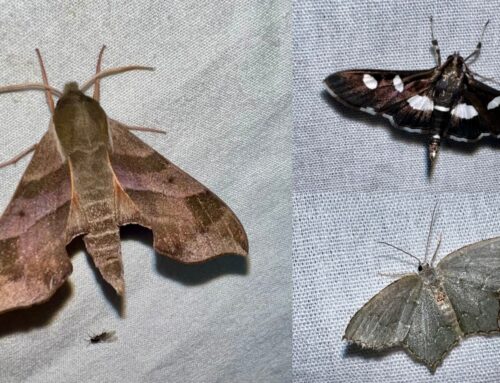Just like many homeowners, a year of staying in and really studying my surroundings led me to consider the landscape in and near the Butterfly House at Tyler. We were facing a season where we weren’t able to share the antics of the caterpillars and butterflies in this space with our visitors. The decision to keep the house closed was hard to accept, but we knew creating a further enclosed space where people would be drawn was not the right thing to do. We would miss our seven weeks of offering everyone a close-up view of native caterpillars and butterflies and seeing visitor’s excitement at witnessing the almost magical transformation from caterpillar to butterfly.
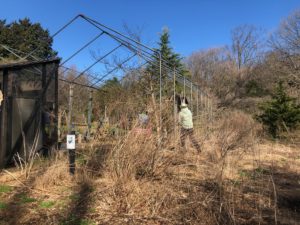
In June, 2020, as we tried to conquer the weeds that had flourished for 12 weeks, we began to see this man-made habitat more clearly. There were so many asters inside the butterfly house, and while they are an important nectar plant for early fall, they shouldn’t have been taking up precious space throughout the inside planting areas where the high nectar needs are in July and August. In fact, many of the inside plants were overgrown, far too abundant, or just not providing the necessary needs of either food for the caterpillars or nectar for the butterflies. Looking back, I recalled our struggles with never having enough flowers providing nectar in July and August. The milkweed was always so consumed by monarch caterpillars that we were left with just stems and hungry caterpillars.
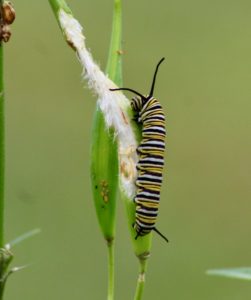
As we migrated to the gardens outside, we saw further evidence of the same concerns. When the Butterfly House opened in 2004 as a one-year exhibit, it was met with such popularity that it continues to this day. Years ago, more long-term plantings of flowering shrubs and perennials were chosen to entice passing butterflies to stop for a drink, hopefully allowing visitors to view additional species in a more natural state. Just like at home, shrubs and perennials need yearly attention to flourish and may even require removal if they are no longer able to flourish. Many of these plants were no longer at their best.
There was so much work to do for the seven weeks the Butterfly House was officially open from mid-July to Labor Day each year. There had to be more we could offer, and ideas began to take hold as we weeded and talked week after week. We came up with some goals which included attracting all pollinators to the outside gardens over three seasons. To do this, we studied the pollinators themselves to identify their needs for food and shelter, identifying plants and an environment to specifically meet their needs. Hummingbirds prefer tubular plants while the larger native bumblebees are the only ones able to force the petals apart and pollinate tightly cupped flowers such as snapdragons and the great blue lobelia. Native bees build their nests in the soil or in crevices – more environments to consider. We needed nectar-producing flowers in early spring when the first thirsty bees emerge, and also in late fall when fuel for migrating insects is desperately needed. We wanted a real habitat to welcome not only pollinators, but other insects too; a habitat we could all peek into and learn from. Citizen Science projects went on our list as a way for every visitor to participate in collecting data relating to the activity between the pollinators and plants.
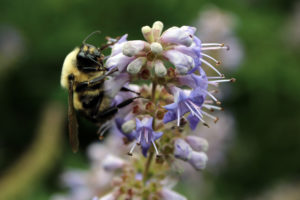
We dreamed big, but who doesn’t start with a long wish list? We looked at the structure and although the skeleton was sound, there was a long list of physical needs, such as replacing the cedar shingles over the entrance and the deteriorated wood supporting the signage. We hoped the net would last another year or two as we obtained estimates to replace this custom-made covering. There were so many plants to replace and so many plants we knew would make a difference if they were added. Best of all, we knew we could extend the season of interest from seven weeks to many months, spring through fall. By selecting the right plants we could entice butterflies to visit the outside gardens earlier, not only for nectar, but for laying eggs. At the same time, other insects would visit for nectar, pollen, shelter and nesting. We envisioned pop-up Explainer Stations where visitors could stop in and view this tiny but exciting world – a world whose inhabitants are suffering declining populations from the changing climate and the high use of pesticides.
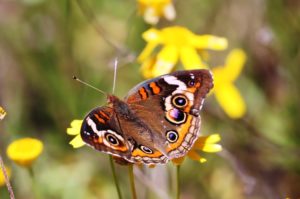
With the support of the senior team to go ahead with our plans, we had a lot of work ahead of us. We also knew we had a wonderful group of dedicated volunteers anxious to help, along with new volunteers passionate about getting involved and learning. We could now build a bigger gardening team, add in Garden Ambassadors to provide additional tours of the outside garden community of plants and insects, and strengthen our team of Butterfly House guides and netters. We tapped into our volunteer entomologists and our Horticulture team for their invaluable input and support. Volunteer artists came forth offering their talent for signage, while our handyperson team offered their assistance with repairs. We were humbled by their generosity, clearly showing their love for Tyler.
I will leave you here for now, with the next installment coming from our Seasonal Intern for the Butterfly House and surrounding garden. Steven Shanko was hired with funds from an anonymous supporter (Thank you!) and is actively helping to make these dreams a reality. He will share his view as we travel from paper plans and long ‘to do’ lists to actively transforming nearly every section of this small, but beloved, part of Tyler.






